Scotland Yard Art and Antiques Unit re-formed
The Metropolitan Police’s Art and Antiques Unit, disbanded in the wake of the Grenfell Tower fire, has been re-formed after fears London was at risk from an increase in the theft and fraud of cultural items.Following the tragic Grenfell Tower fire on June 14 the entire art crime squad was disbanded and seconded to help with the inquiry.
Now the unit’s detective constables Ray Swan and Sophie Hayes have returned to the department joining new supervisor, detective sergeant Rob Upham. A third detective constable is due to join the team in the next few months.
Upham, speaking to Antiques Trade Gazette said: “We’ve already started instigating investigations, have already yielded one arrest and from another investigation have recovered two paintings, previously reported stolen.”
Upham recently joined from the Met’s Homicide and Serious Crime Command. The art crime squad had been without a lead since Claire Hutcheon left in March 2016.
A Met police spokesman confirmed that the “Met’s Art and Antiques Unit has been reformed” and a third team member will join as soon as possible.
The unit has been temporarily closed in the past, for instance following the July 2005 bombings. However, this year there were fears it would be permanently closed due to budgetary pressures on the Met.
Speaking during the summer, former Met Police art crime detective Dick Ellis raised concerns of a "vacuum (being) left in Europe's largest art market".
He said the effective investigation of crimes relating to the “burglary of art and antiques, international cultural property theft, fraud and money laundering” are all directly impacted by the lack of a dedicated police unit. He highlighted that in contrast to the UK, the US had trained 400 officers since 2007 and the FBI has 16 special agents on its art crime team.
Six months on from the fire that claimed 71 lives, the Grenfell inquiry began a two day hearing this week to examine issues such as witness statements and timetables. The hearing of evidence will begin next year.
Stolen van Ruisdael painting on display at Ulster Museum
A painting by Dutch master Jacob van
Ruisdael, made famous by being stolen by notorious Dublin criminal
Martin Cahill, has gone on display in Belfast.
The Cornfield was offered by the Alfred Beit Foundation in lieu of tax and allocated to the Ulster Museum.It was stolen from Russborough House in County Wicklow three times between 1974 and 2002 but recovered each time.
Jacob van Ruisdael is considered by many to be a foremost Dutch landscape painter at that time.
The painting was acquired more than a century ago by Sir Otto Beit (1865-1930), joining a collection of old master works assembled by his relative, the diamond magnate Alfred Beit (1853-1906).
In 1930, the collection passed to Otto's son Sir Alfred Lane Beit (1903-1994) who relocated it some 20 years later to Russborough House, where the Cornfield hung in the saloon alongside other Dutch paintings.
The IRA heiress and the General
However, the paintings attracted much unwanted attention.An Irish Republican Army gang, that included English heiress Dr Rose Dugdale, stole 19 paintings after tying up Sir Alfred and his wife in 1974.
All of the stolen paintings were recovered in County Cork a few weeks later.
He took the van Ruisdael as part of a heist involving 18 paintings but the Cornfield was recovered days after the robbery.
And finally, the Cornfield was one of five paintings taken from Russborough in 2002 but recovered three months later.
'Absolute masterpiece'
Anne Stewart, a senior curator of art with the Ulster Museum, said it was excited and delighted to have a painting as important as the Cornfield in its collection.She described it as an "absolute masterpiece".
"Jacob van Ruisdael was really the finest of all the Dutch landscape painters of the 17th century," she said.
"This is one of his most beautiful paintings.
"Jacob van Ruisdael was so adapt and clever at painting landscapes that he really went beyond the representation of what he saw... he gives it a deeper poetic meaning."
She said every museum had concerns about the security of its collections, but that the Ulster Museum had gone to great lengths to make sure its collection was secure.
Despite the number of times it has been stolen, the painting is in a "miraculous" condition, she added, although a very close look reveals that the Cornfield does bear the scars of ill-treatment at the hands of thieves.
Who was Jacob van Ruisdael?
Jacob van Ruisdael (1628/9? - 1682) is commonly considered the foremost landscape painter of the so-called Dutch Golden Age.He was born in Haarlem, in the north of the Netherlands, and was the son of a little known painter, Isaack Jacobsz van Ruisdael.
His work is considered to be source of inspiration for later generations of British landscape artists such as John Constable.
The subject of the cornfield featured in many of Ruisdael's works but was rarely treated as the central theme.
"I have no doubt that this beautiful painting will captivate visitors to the Ulster Museum."
The Cornfield is on display in the Life and Light Dutch and Italian Painting exhibition at the Ulster Museum.
The museum also holds a painting, River Landscape with Figures in Boats and a Church in the Distance from van Ruisdael's uncle and teacher, Salomon van Ruysdael.
Although they were uncle and nephew, they used slightly different spellings of their surname.
The Craziest Art Heists in American History
Davidoff-Morini Stradivarius, 1995
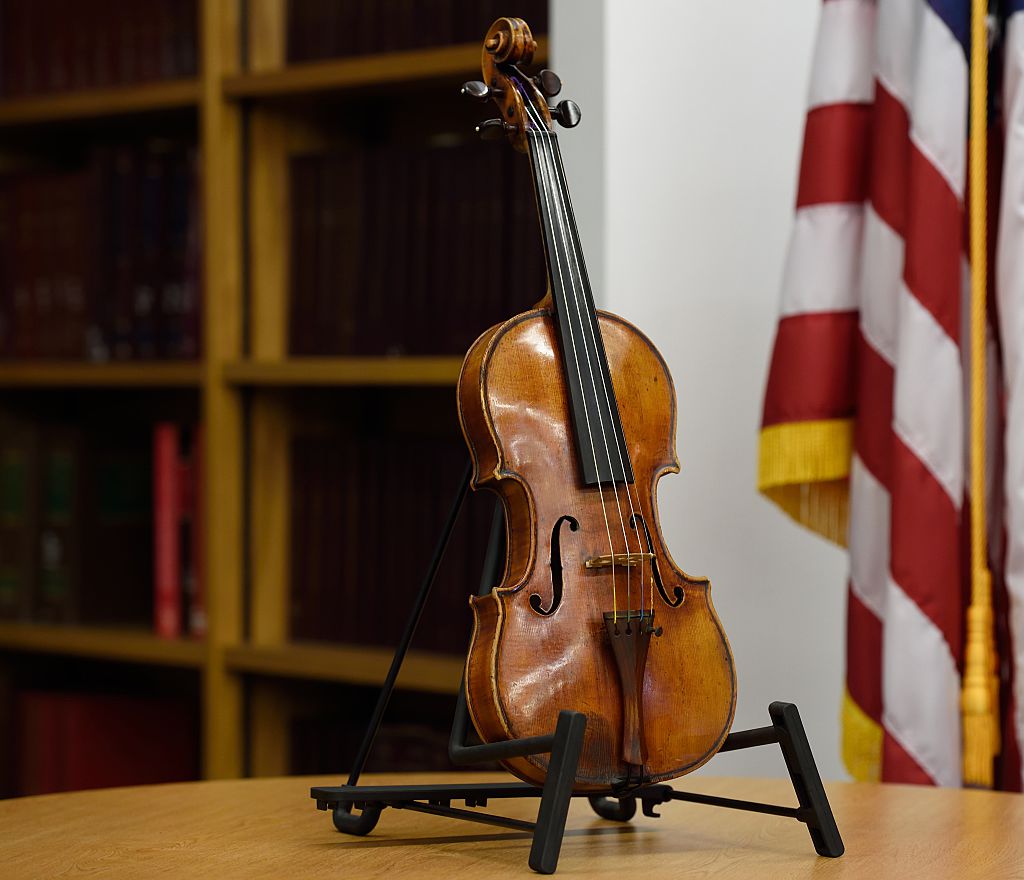
The violin in question has not been found. | Don Emmert/AFP/Getty Images
Maxfield Parrish’s mural, 2002
Two panels from Maxfield Parrish’s mural commissioned for Gertrude Vanderbilt Whitney’s 5th Avenue mansion in New York vanished from a California museum in 2002, according to the FBI. Thieves took the oil paintings from a West Hollywood art gallery. They cut the paintings, valued at $4 million, from their frames. The paintings remain on the Art Crime Team’s Most Wanted list.Renoir painting, 2011
Upon entering a Houston home, a masked robber took Madeleine Leaning on Her Elbow with Flowers in Her Hair by Renoir. The armed robber, supposedly in his early to mid 20s, got away with the painting after the homeowner heard a noise and saw the intruder. The painting is said to be worth $1 million, according to the Bureau. This theft remains on the FBI’s Top 10 Art Crimes.Multiple pieces of artwork, 1990
Two men dressed as police officers tied up security officers on duty at the Isabella Stewart Gardner Museum and proceeded to have free reign of the museum, TIME says. Taking 13 pieces of artwork, this heist in Boston is one of the largest in American history. What makes this story even more interesting is that the case remains unsolved. The statute of limitations has run out and none of the artwork is back at the museum, the FBI told CNN. As of May 2017, the museum is offering a $10 million reward for help solving the mystery.18 paintings by various artists, 1988

The thieves used a skylight to enter the gallery. | FastGlassPhotos/iStock/Getty Images
Salvador Dalí sketch, 2004
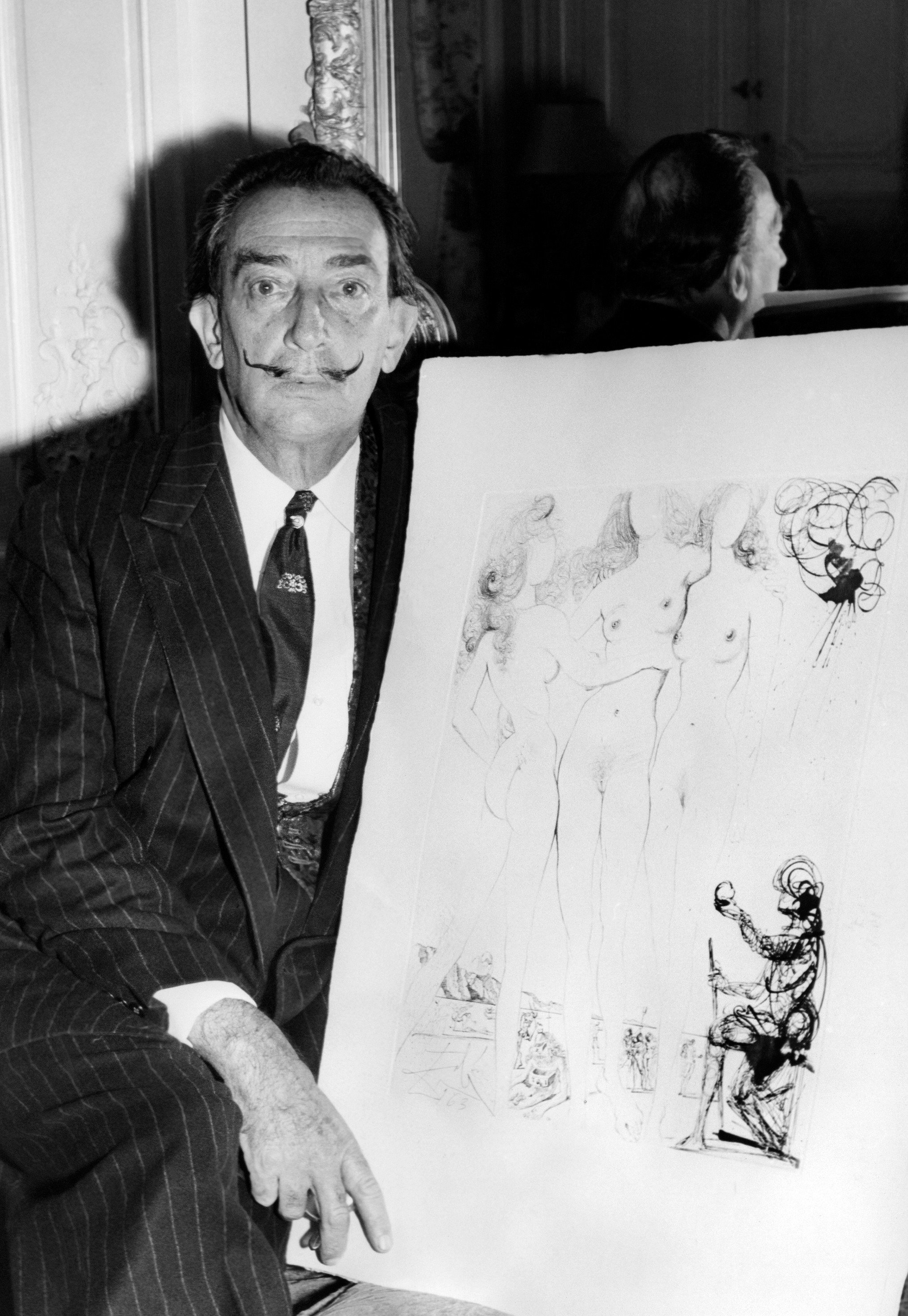
The drawing was stolen by a guard. | -/AFP/GettyImages
Fake artwork, 1987

They ended up getting caught in their scheme. | fietstouring/iStock/Getty Images
Planned exhibit about art dealer Max Stern reinstated by German mayor
A planned exhibit about world-renowned Jewish Montreal art dealer Max Stern has been reinstated by the mayor of Dusseldorf, Germany, after he canceled it last month.Due to open in February after more than three years of planning by Dusseldorf’s Stadtmuseum, the exhibit – titled “Max Stern: from Dusseldorf to Montreal” – also was slated to include a stop in Israel before finishing in Montreal.
At the time of the November cancellation, German city officials cited “current demands for information and restitution in Germany” as the reason for the exhibit’s abrupt cancellation.
The exhibit will now go ahead in a “more complete and revised form” at a later date, the city said in a statement. It will now take place in the Stadtmuseum with an additional, yet-to-be-appointed curator and a “scholarly advisory board,” the city statement said. Mayor Thomas Geisel told the New York Times that the target date for the revised exhibition is October 2018. The city also is planning an international symposium about Stern to “offer a forum for research on the subject and to discuss possible forms of communicating and documenting it.”
A native of Dusseldorf, Stern took over his late father’s art gallery there in 1934 until the Nazis made it illegal for Jews to sell art. During this period, the Nazis looted hundreds of valuable artworks from his gallery.
Stern soon left Germany and settled in Montreal, where he established the renowned Dominion Gallery.
Following his death in 1987, Concordia became the base for the Max Stern Art Restitution Project, which uses funds left by his estate to Montreal’s Concordia and McGill universities and the Hebrew University in Jerusalem to seek out and recover gallery artworks stolen by the Nazis.
To date, 16 have been recovered and returned to their rightful owners, with hundreds still unaccounted for.
The list of Stern gallery artworks includes some works in the collection of the Stadtmuseum and the city of Düsseldorf.
World's first 'billion-dollar painting' almost lost to underworld after daring heist

A
Leonardo da Vinci masterpiece which was valued just over $100m ten
years ago is now being touted as the first painting in the world that
could fetch $1bn at auction.
The staggering 10-figure price tag is viewed in art circles as entirely possible, following last month's sale of Leonardo's Salvator Mundi for a world record $591m.
Of the 20 Leonardo Da Vinci paintings thought to be in existence, all except two are held by the world's most famous and powerful art museums.
One of those works, Madonna of the Yarnwinder, painted by Leonardo in
the early 16th century, is privately owned by one of Britain's
wealthiest aristocrats - Richard Scott, the 10th Duke of Buccleuch.
The art world is now wondering if the duke, who is Scotland's largest
landowner, will be tempted to put his prized treasure on the auction
block.
The Madonna of the Yarnwinder, a small 48cm x 37cm canvas featuring a
seated Virgin Mary holding the infant Jesus, has been a possession in
the duke's family for around 250 years.
However, in 2003 the painting went missing for four years, after two men
armed with a knife and axe stole it from the duke's Drumlanrig castle,
near Dumfries. Drumlanrig Castle was used as a set in the popular
British-American television drama series, Outlander.
The two men had posed as tourists wanting to see the duke's collection
of paintings, which is thought to be the UK's most valuable private
holding.
Alison Russell, an 18-year-old tour guide, described how the art thieves had been waiting outside the castle for the doors to open, one morning in August 2003.
The pair ignored all the other paintings and galleries inside the
castle, and instead rushed Ms Russell towards the room where the duke's
prized centrepiece was hung.
Once there, one of the men grabbed her and held a knife to her throat.
The other stood guard by the painting with an axe, warning Ms Russell's
co-workers to stay away.
They removed the Leonardo painting from the wall, and escaped out a window.
The biggest art theft in British history remained an unsolved mystery
until 2007 when a man named Marshall Ronald contacted the duke, saying
he knew where the Leonardo was and could arrange its return for a fee of
almost $10m.
That led to two undercover police, who posed as an art expert and the
duke's representative, meeting with Ronald, an English lawyer.
It was agreed the Leonardo would be taken to a law firm in Glasgow,
where a second meeting was raided by police and the painting returned to
the Duke of Buccleuch.
The Madonna of the Yarnwinder is currently on loan to the National Gallery of Scotland in Edinburgh.
Jaynie Anderson, a professor of fine arts at the University of
Melbourne, said Leonardo's Madonna of the Yarnwinder was a "much more
beautiful painting" than the Salvator Mundi.
The Salvator Mundi, showing Christ dressed in Renaissance-style robes
holding a crystal sphere, was significantly damaged, and it had required
extensive restoration work at a New York City studio.
"I'm amazed at the price the Salvator Mundi went for," Prof Anderson said.
"The face is very damaged. And I think the fact that the face of Christ
is damaged sort of inhibits you really liking the picture."
Some art critics had also doubted the authenticity of Salvator Mundi in
the lead up to last month's Christie's auction. In contrast, Prof
Anderson said the provenance of Leonardo's Madonna of the Yarnwinder was
"impeccable".
"It is an important composition and a very interesting proposition for auction," Prof Anderson said.
"If it went up for sale I think it could go for much more than the
Salvator Mundi. It is a much more beautiful painting, a far more sexy
painting."
An auction would inevitably attract big money bidders from Chinese
billionaires, Russian oligrachs and Middle East royals. However, such is
the rarity and allure of the Madonna of the Yarnwinder, Prof Anderson
believed American billionaires and museums could also be prompted into
action.
"There is competition between elite museums to make the best acquisitions," Prof Anderson said.
"The fact it is now on loan to the National Gallery of Scotland might
mean that the Duke of Buccleuch intends to gift it to them when he dies.
But that is an awful lot of money, so he is probably thinking about it.
And if he isn't, the big auction houses like Christie's most certainly
will be."
As well as the scarcity of Leonardo's works, Prof Anderson said the
Italian artist, who was born in 1452, had never gone out of fashion –
unlike other famous painters.
"Leonardo is very sympathetic. Everybody is fascinated with him as a personality," Prof Anderson said.
Prof Anderson, an expert in Italian Renaissance art, described Leonardo
as a melancholic, neurotic and beautiful man, and likened his appeal to
Shakespeare's Hamlet.
"When he walked down the street his contemporaries said you couldn't stop staring at him."
Leonardo was not a prolific painter, but he was constantly drawing and writing, she added.
"Contemporaries describe him working on The Last Supper, and how he spent ages just staring at it and not doing anything."
It was confirmed last week that Salvator Mundi will hang at The Louvre in Abu Dhabi.
There is a second version of the Madonna of the Yarnwinder, which is
likely the only other Leonardo da Vinci painting in private hands.
The identity of the owner is unknown, but it is believed to be an American collector.

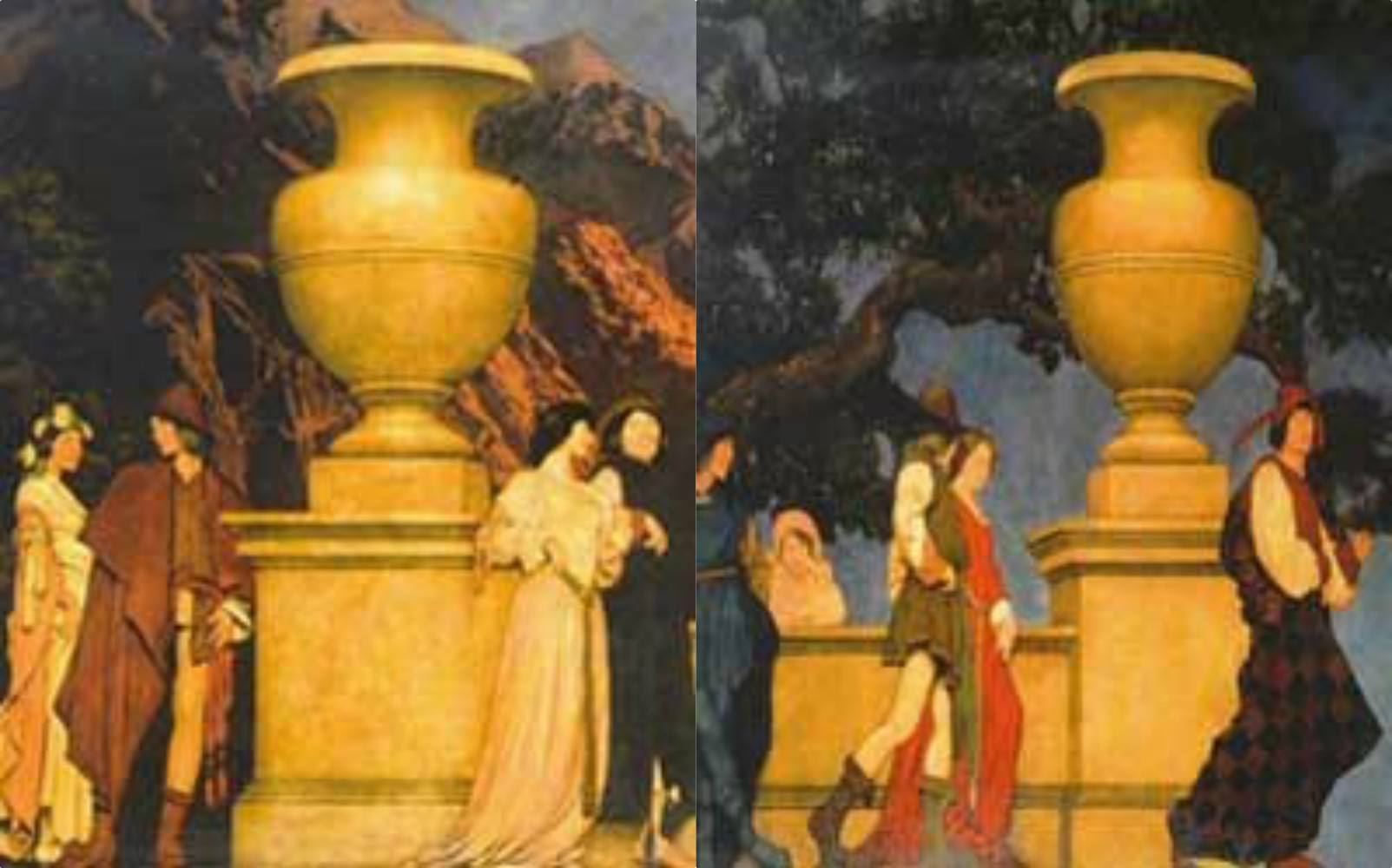
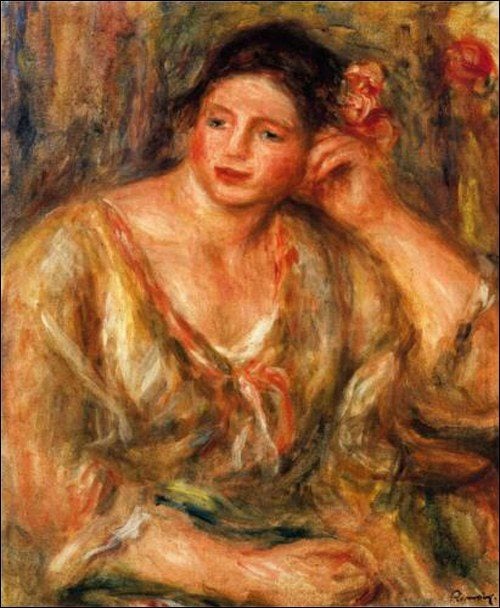
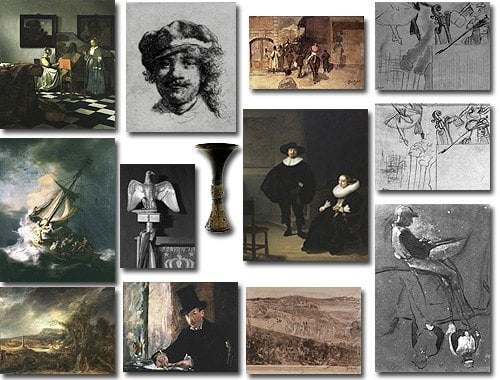
No comments:
Post a Comment